Kyle Greenwood - Scripture and Cosmology: Reading the Bible Between the Ancient World and Modern Science
Here you can read online Kyle Greenwood - Scripture and Cosmology: Reading the Bible Between the Ancient World and Modern Science full text of the book (entire story) in english for free. Download pdf and epub, get meaning, cover and reviews about this ebook. year: 2015, publisher: InterVarsity Press / IVP Academic, genre: Religion. Description of the work, (preface) as well as reviews are available. Best literature library LitArk.com created for fans of good reading and offers a wide selection of genres:
Romance novel
Science fiction
Adventure
Detective
Science
History
Home and family
Prose
Art
Politics
Computer
Non-fiction
Religion
Business
Children
Humor
Choose a favorite category and find really read worthwhile books. Enjoy immersion in the world of imagination, feel the emotions of the characters or learn something new for yourself, make an fascinating discovery.

- Book:Scripture and Cosmology: Reading the Bible Between the Ancient World and Modern Science
- Author:
- Publisher:InterVarsity Press / IVP Academic
- Genre:
- Year:2015
- Rating:3 / 5
- Favourites:Add to favourites
- Your mark:
- 60
- 1
- 2
- 3
- 4
- 5
Scripture and Cosmology: Reading the Bible Between the Ancient World and Modern Science: summary, description and annotation
We offer to read an annotation, description, summary or preface (depends on what the author of the book "Scripture and Cosmology: Reading the Bible Between the Ancient World and Modern Science" wrote himself). If you haven't found the necessary information about the book — write in the comments, we will try to find it.
Kyle Greenwood: author's other books
Who wrote Scripture and Cosmology: Reading the Bible Between the Ancient World and Modern Science? Find out the surname, the name of the author of the book and a list of all author's works by series.
Scripture and Cosmology: Reading the Bible Between the Ancient World and Modern Science — read online for free the complete book (whole text) full work
Below is the text of the book, divided by pages. System saving the place of the last page read, allows you to conveniently read the book "Scripture and Cosmology: Reading the Bible Between the Ancient World and Modern Science" online for free, without having to search again every time where you left off. Put a bookmark, and you can go to the page where you finished reading at any time.
Font size:
Interval:
Bookmark:

SCRIPTURE
and
COSMOLOGY
Reading the Bible Between
the Ancient World and
Modern Science

KYLE GREENWOOD

www.IVPress.com/academic
InterVarsity Press
P.O. Box 1400,
Downers Grove, IL
60515-1426
ivpress.com
2015 by Kyle Greenwood
All rights reserved. No part of this book may be reproduced in any form without written permission from InterVarsity Press.
InterVarsity Press is the book-publishing division of InterVarsity Christian Fellowship/USA, a movement of students and faculty active on campus at hundreds of universities, colleges and schools of nursing in the United States of America, and a member movement of the International Fellowship of Evangelical Students. For information about local and regional activities, visit intervarsity.org.
Scripture quotations, unless otherwise noted, are from the New Revised Standard Version of the Bible, copyright 1989 by the Division of Christian Education of the National Council of the Churches of Christ in the USA. Used by permission. All rights reserved.
Cover design: Cindy Kiple
Images: The Creation of the World, closed doors of the triptych The Garden of Earthly Delights by Hieronymus Bosch at Prado, Madrid, Spain / Bridgeman Images
Habakkuk Commentary, Columns 58, Qumran Cave at The Israel Museum, Jerusalem, Israel / Bridgeman Images
ISBN 978-0-8308-9870-1 (digital)
ISBN 978-0-8308-4078-6 (print)
Library of Congress Cataloging-in-Publication Data
Greenwood, Kyle.
Scripture and cosmology : reading the Bible between the ancient world and modern science / Kyle Greenwood.
1 online resource.
Includes bibliographical references and index.
Description based on print version record and CIP data provided by publisher; resource not viewed.
ISBN 978-0-8308-9870-1 (eBook) -- ISBN 978-0-8308-4078-6 (pbk. : alk. paper)
1. Biblical cosmology. 2. Bible and science. I. Title.
BS651
220.85231--dc23
2015023988
For Stephen, Jessica and Michael

T he Bible has many authors, but one Author. It contains scores of books, but has one story. It was written in ancient times, but speaks to modern times. It is studied, parsed, dissected, analyzed and scrutinized by scholars, but is accessible, comprehensible and edifying to the layperson. The Bible is complex, yet simple; distant, yet near; foreign, yet familiar; and disturbing, yet comforting. The Bible is many things to many people, but for those whose faith is formed by its words, it is Scripture.
Scripture holds a special place in the lives of Christians. It contains Gods revelation about himself and the world in which we live. What made Jesus parables effective was, in part, that they touched the everyday life experiences of his audience, such as money, employment, agriculture and livestock. Likewise, we connect with Scripture on a personal level because its narratives deal with people like us in situations and circumstances with which we can readily identify. We can resonate with the jealousy of Cain, the hunger and thirst of the Israelites in the wilderness, the barrenness of Hannah, the love of Ruth and Boaz, the bond of friendship between David and Jonathan, the challenge of making ends meet and the frustration of living in a society ruled by those whose interests are not generally our own. The Bible takes place in reality, with historical figures in historical places participating in the thrills of lifes victories and the agonies of lifes defeats.
One of the first things I do each day is check the weather. I want to know how the meteorologists expect the day to shape up. Living in Colorado, this may entail a short-sleeved shirt and sunglasses on my way to work, and a coat and boots on my return. Nonetheless, I rely (somewhat reluctantly, at times) on the expertise of those who pay attention to things like barometric pressure, jet streams, water-vapor density and upper atmospheric conditions. This has not always been the case. When Jesus called his first disciples, they were fishing on the Sea of Galilee (Mk 1:16-20). Before Peter, James and John set to sea that morning, they didnt turn on the Weather Channel or check the Weather Bug app on their smartphones. They looked to the sky. Red sky at night, sailors delight; red sky at morning, sailors take warning (see Mt 16:2-3). While you and I embrace weather reports with a healthy dose of skepticism, we recognize that those reports are generally reliable, based on decades of accumulating atmospheric data and mapping meteorological patterns. Peter, James and John simply looked to the skies.
The doctrine of the perspicuity of Scripture states that Scripture is clear and unambiguous on matters pertinent to salvation. It does not, however, apply to all matters. This should be an obvious conclusion, based on the overwhelming number of biblical commentaries and the voluminous sales of study Bibles. As someone who both studies and teaches the Old Testament professionally, I can attest that there are copious passages, topics and issues that require some explanation for students of the Bible.
One such issue is cosmologythat is, how the biblical authors and characters viewed the structure and nature of the known world. Why does the Bible refer to heaven as up there? How is it that birds, clouds, the sun, the moon and stars are located in heaven, Gods home? What does Scripture mean when it refers to the four corners, ends or depths of the earth? Why is Sheol at the opposite end of the cosmos from heaven? What does it mean for the cosmos to have an upper end and a lower end? Why does Elisha talk about windows in the sky? Is there really a firmament in the heavens that separates the waters above from the waters below? How could there be storehouses of snow in heaven? What are the fountains of the deep? These questions may not come to mind immediately to the casual reader of Scripture, but they are there for the asking.
A number of years ago, one of my college roommates told me about a man who had devoted his entire adult life to the study of the Bible. In his final days, he was asked to comment on his mastery of its contents. The man replied by running his finger back and forth across the worn leather binding, and said, Ive only scratched the surface. I cant attest to the authenticity of the story, but I can attest to the authenticity of its message. There is always more to be mined from the depths of its quarry. Having spent the last two decades studying the languages, history, geography and culture of ancient Israel and its neighbors, I am humbled by the vastness of my ignorance. It has been said that the more you know, the more you realize what you dont know. This has been true for me in my own study of the Bible, as I suspect it is for you as well.
I have learned some things, though, that I hope will benefit those who want to know more about the book they call Scripture. While I am dealing specifically with the issue of biblical cosmology and how the Bible has been interpreted differently in light of changes in our understanding of the cosmos, this book is really about reading the Bible faithfully, which I suspect is a goal for most, if not all, of those who have chosen to read
Font size:
Interval:
Bookmark:
Similar books «Scripture and Cosmology: Reading the Bible Between the Ancient World and Modern Science»
Look at similar books to Scripture and Cosmology: Reading the Bible Between the Ancient World and Modern Science. We have selected literature similar in name and meaning in the hope of providing readers with more options to find new, interesting, not yet read works.
Discussion, reviews of the book Scripture and Cosmology: Reading the Bible Between the Ancient World and Modern Science and just readers' own opinions. Leave your comments, write what you think about the work, its meaning or the main characters. Specify what exactly you liked and what you didn't like, and why you think so.

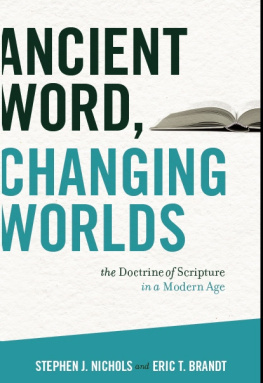
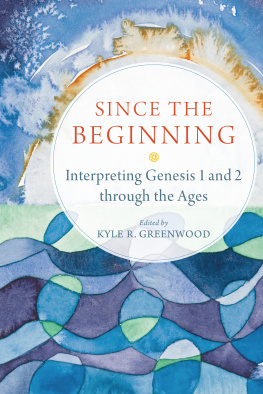
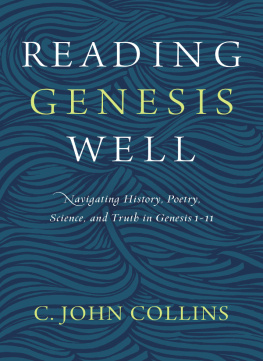
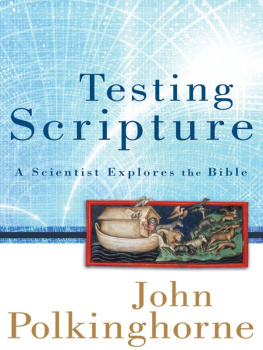
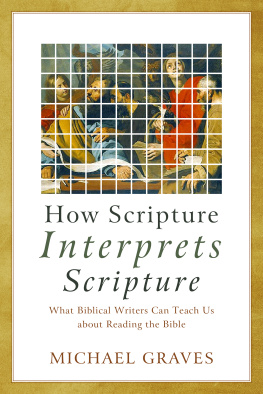
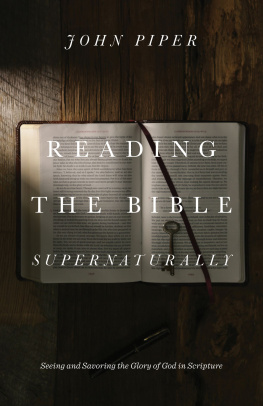
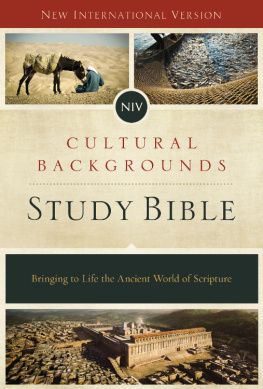
![Scott Hahn [Inconnu(e)] - Scripture Matters: Essays on Reading the Bible From the Heart of the Church](/uploads/posts/book/134760/thumbs/scott-hahn-inconnu-e-scripture-matters-essays.jpg)